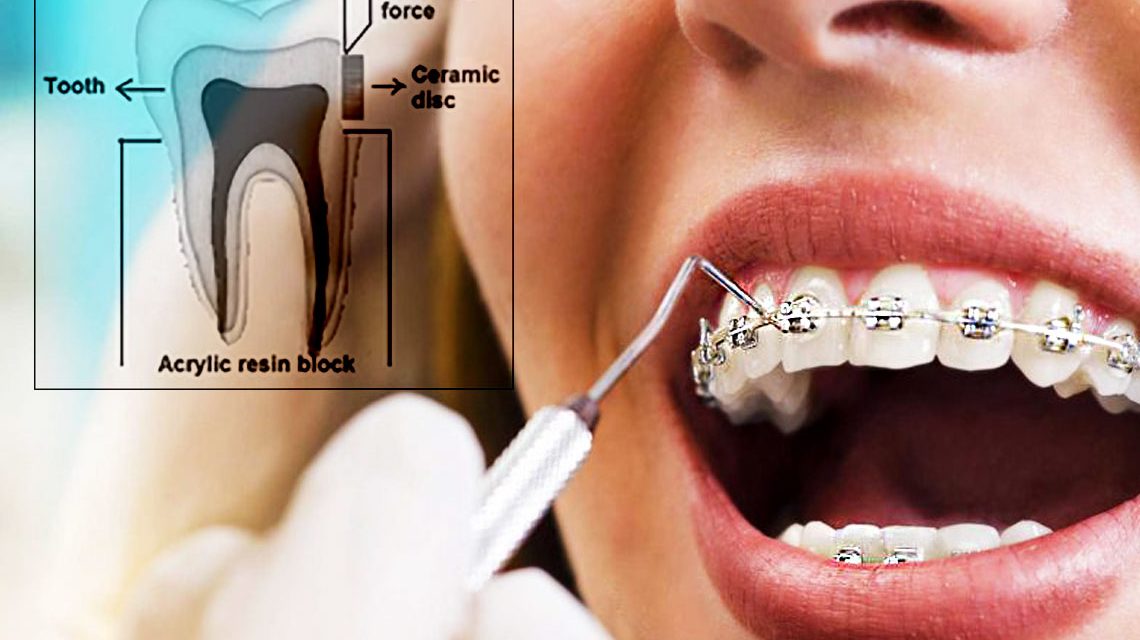INTRODUCTION:
The purpose of this study was to compare 2 common methods of measuring orthodontic shear bond strength.
METHODS:
Brackets were bonded to 40 bovine incisors, and the teeth were mounted in a jig. The teeth were paired for symmetry, and the pairs were divided into 2 groups for debonding. In group 1, the shear force was applied with a rectangular wire under the tie wings. In group 2, a shearing blade applied force to the junction between the bracket base and the adhesive.
RESULTS:
Debonding with the shear blade produced higher (24.86 +/- 7.44 MPa) and more dispersed (coefficient of variation = 29.91%) bond strengths compared with the wire loop (17.12 +/- 3.16 MPa, coefficient of variation = 18.44%). Adhesive remnant index (ARI) scores showed a tendency for cohesive failure in the enamel in the shear-blade group (ARI = 5) compared with adhesive failure (ARI = 3) in the wire group.
CONCLUSION:
There is a need to standardize bond strength tests. The results of this study favor the wire-loop method, which might have more similarity to clinical loads. The regression formula might make comparison of previous studies easier.
- PMID: 16979498



